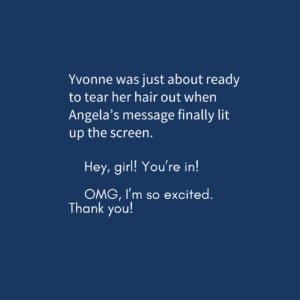5 ways to improve your manuscript

Good news! These tips don’t involve any writing.
Feeling a bit of writer’s block? Don’t worry, there are lots of ways to improve your manuscript without having to labour over sentences and story arc.
Here are five ways to give your work-in-progress a lift, without lifting your word count.
1. Brush up formatting
Go through your manuscript and make sure each chapter is set on a new page (use a page break instead of hitting that return button), chapters are numbered in order, and you’ve used an easy-to-read font like Times New Roman 12 pt, with double or 1.5 line spacing.
This will instantly improve your manuscript by giving it a more consistent and professional appearance, and save you time later when you’re getting it ready to submit to publishers or agents.
2. Check regional spelling
Did you know there are lots of variations of English? Depending on your target audience, you can choose the one your readers will be most familiar with. If you’re publishing in Australia, use Australian English. This means you’ll be following the Macquarie Dictionary for spelling variations. If you’re aiming for the US market, go with US English – the Merriam-Webster is a great resource (and it’s free!). For British readers, use UK English and the Oxford Dictionary.
Choosing a regional English language helps you to maintain consistency across your manuscript. It ensures you catch words that are spelled differently in different countries – like curb and kerb, cosy and cozy – and it will guide you on regional terms such as trash can or garbage bin, sidewalk or pavement, lollies or candy, cell phone or mobile phone – the list goes on.
3. Look at consistency
I can’t emphasise enough how important consistency is in making a finished manuscript look professional! As the author, you get to make a lot of decisions about the words you want to use and your preferred spelling variations to ensure consistency. Run searches for words that can be spelled differently, such as OK vs okay, and choose one to use throughout. You should also check whether you’ve used punctuation such as quote marks (single or double) and dashes (en or em) consistently throughout.
Note: in Australia, we tend to use single quote marks with nested doubles, eg: ’Hey, did you hear that song, “Espresso” by Sabrina Carpenter?’ The US tends to reverse this: double quotes with nested singles, eg: “No, I much prefer Dua Lipa‘s new song, ’Illusion’.
Consistency affects loads of elements: You can also make a note of how you’ll use numbers (as a basic starting point, we often see numbers one to ninety-nine spelled out and 100+ as numerals in books), show time (words or figures), address capitalisation in headings, punctuate abbreviations and more.
And of course, it affects aspects such as character features and setting details as well. Taking note of whether your main character has blue eyes and always wears rose-scented perfume will ensure you don’t confuse readers by mixing up those foundational details later in the story.
4. Review character names
Do any of your characters have similar sounding names? If you have two characters with names that look and sound alike – Dave and Dan or Lisa and Liz, for instance – it’s a good idea to change one of them, to ensure readers don’t get confused about who’s doing what. This applies to minor characters too!
Even if you don’t think your characters’ names are similar, they can appear that way on the page to a reader who’s skimming over a paragraph. So even sharing the same initial can be enough to warrant changing a character name.
While you’re there, keep an eye out for characters’ names that have changed during the course of the novel. This happens more often than you might think!
5. Weed out repetition
Do you already know which words you have a tendency to use in every second sentence? If so, do a search and see how many instances you can remove to ensure they don’t become repetitive. This applies to elements such as speech tags and action beats, too. You might find you’re often making your characters fiddle with their hair or exclaim loudly!
If you haven’t yet twigged to your crutch words, start by searching for adverbs: really, very, finally, actually and completely are common, and most of the time you don’t need them. Take a look and see how many you can weed out! It’ll make your writing so much stronger.
Don’t feel bad that you’ve developed a writing crutch – it’s natural to reach for the same words over and over, especially when working on a full-length novel. Looking out for them so you can change it up is all part of the editing process – and it’s a powerful way to improve your manuscript.
Want some help maintaining consistency in your work? Reach out about line and copyediting. I’ll look out for all these aspects and more, and will record all decisions in a style sheet so you can keep track of your preferences throughout the publishing process.



